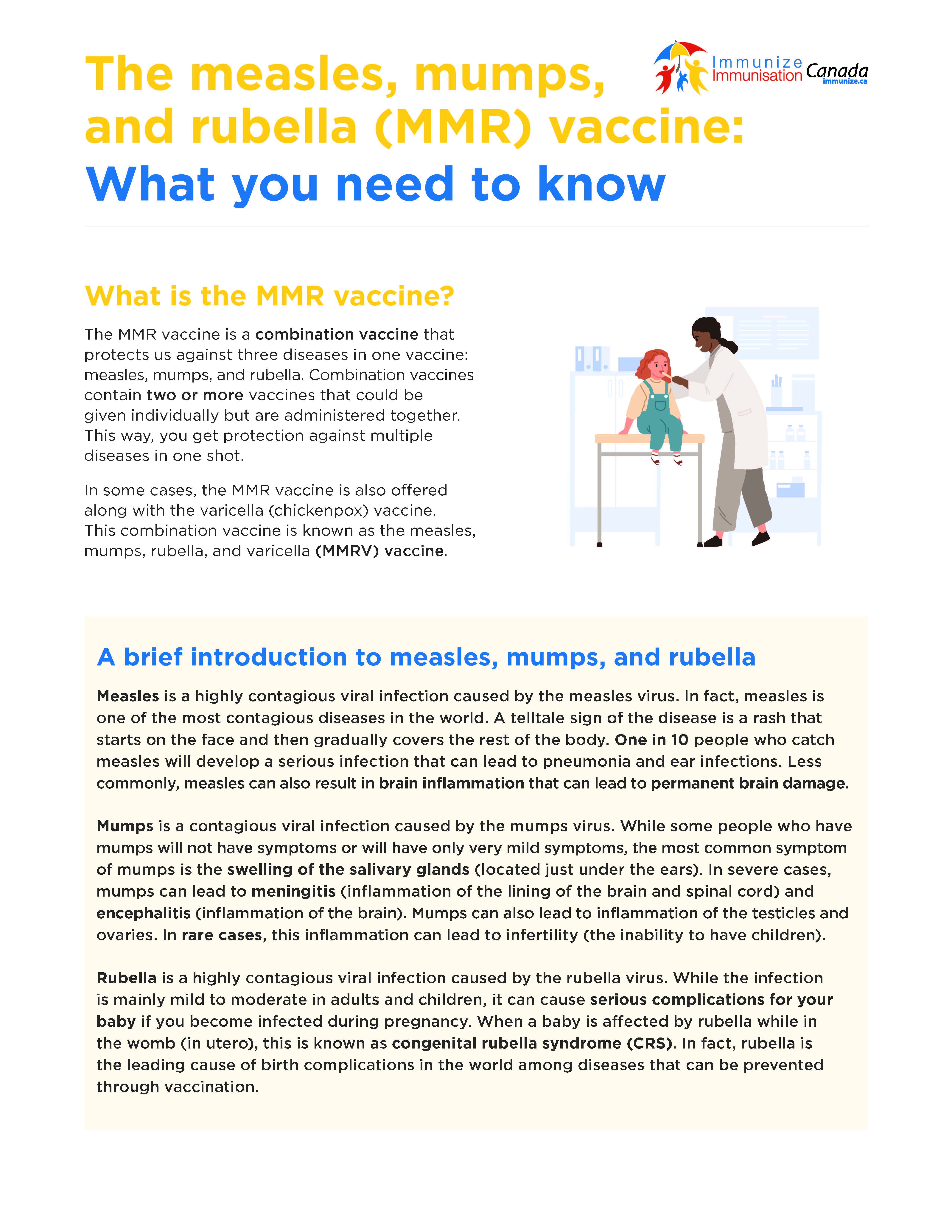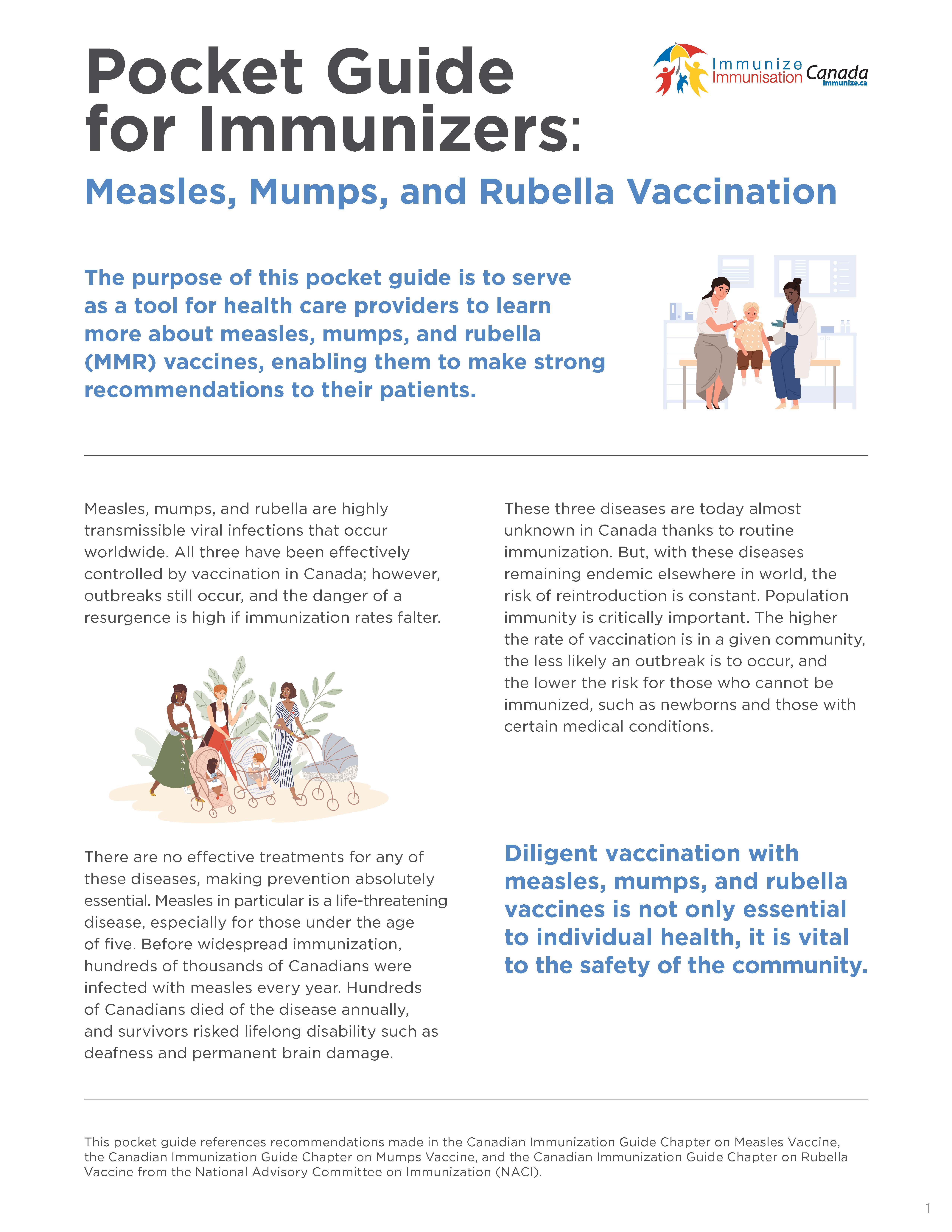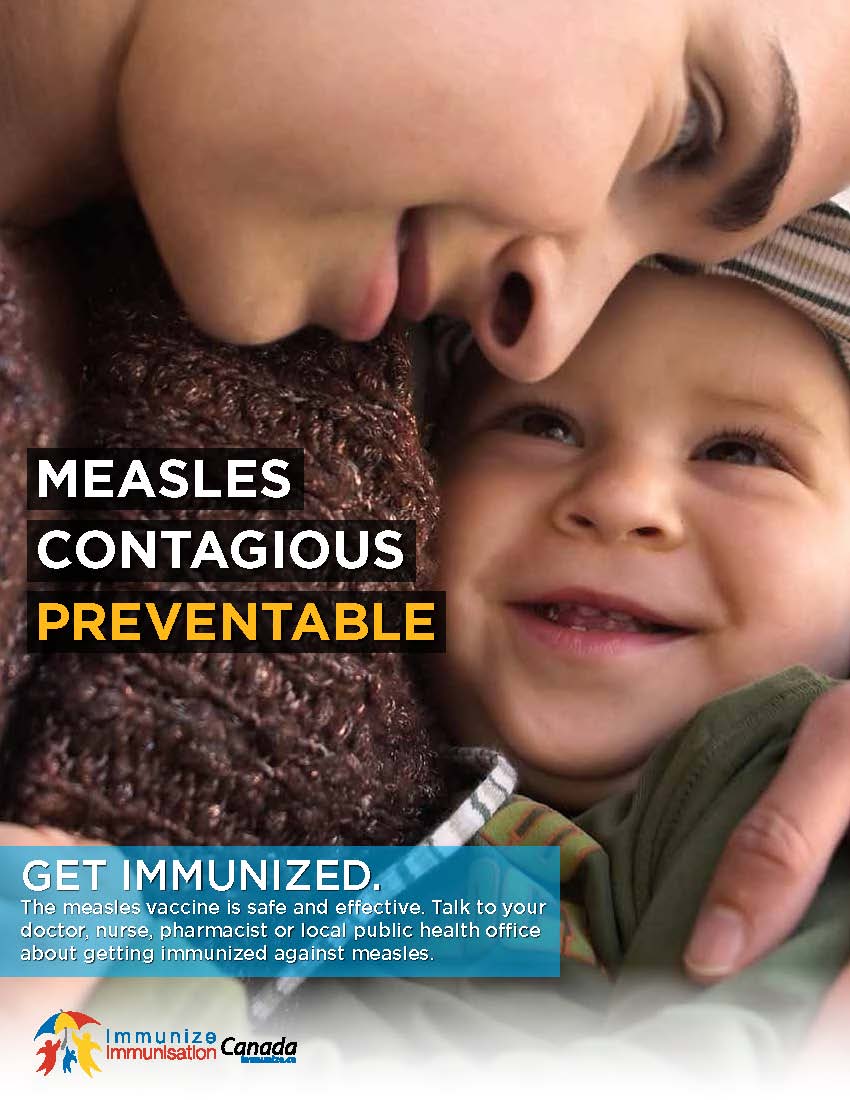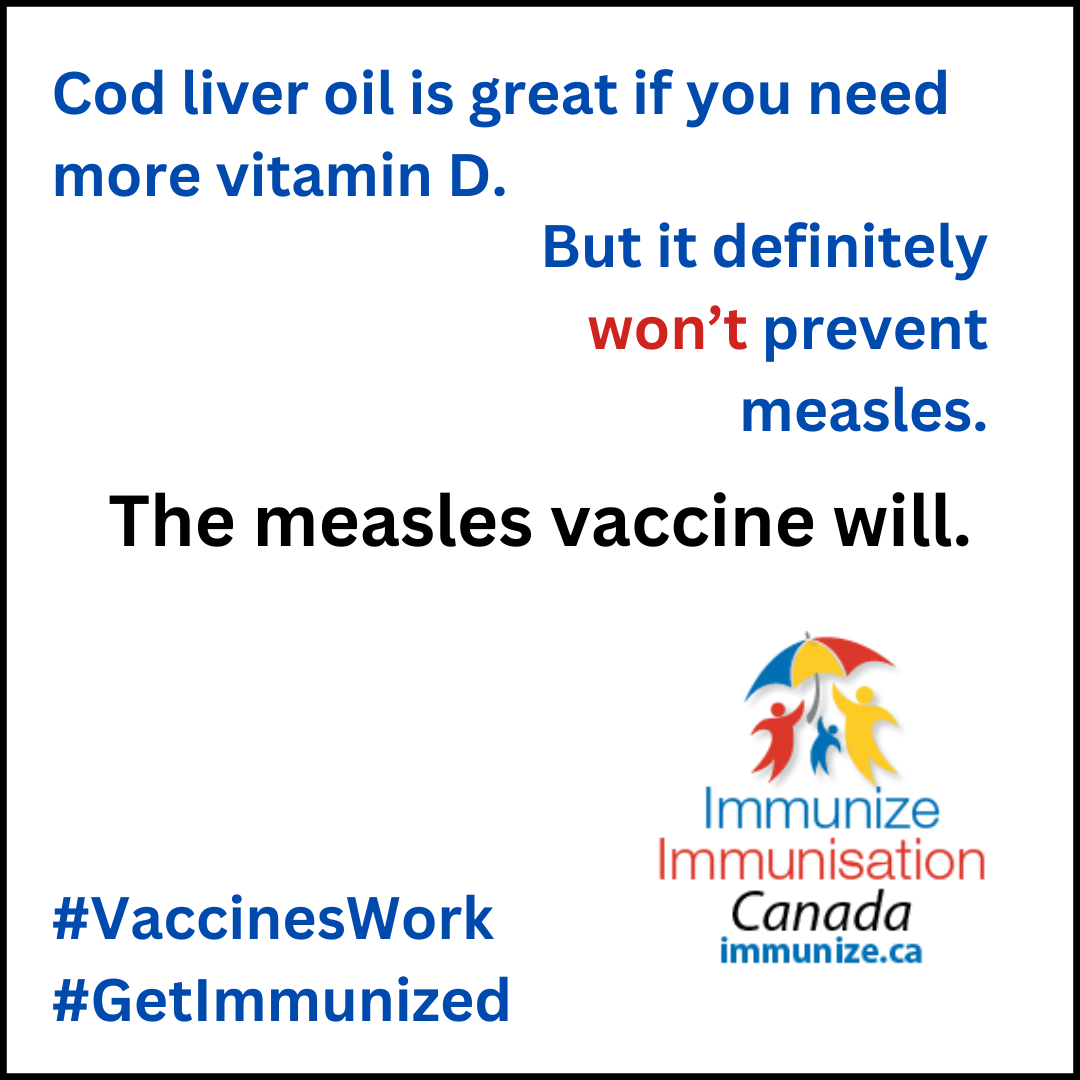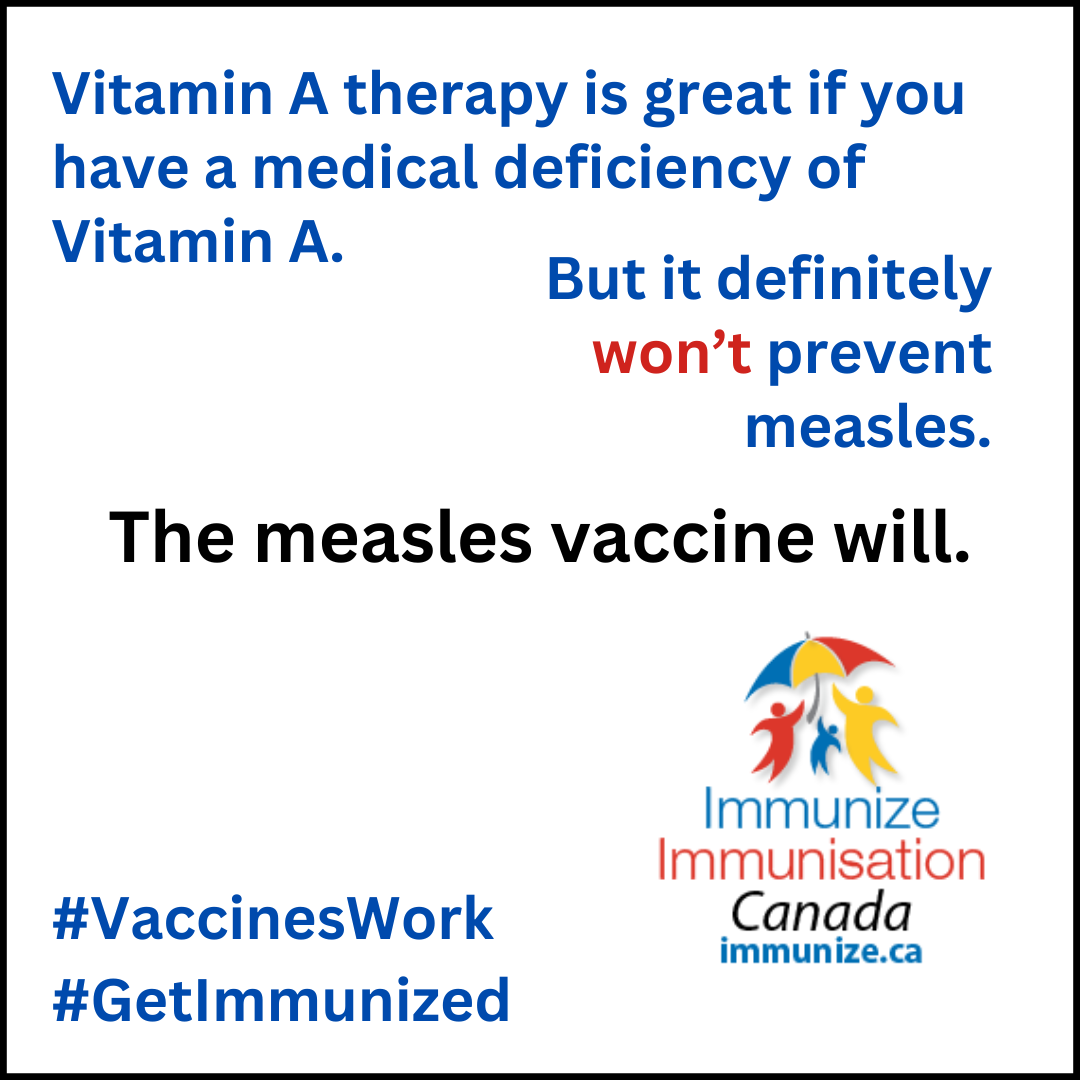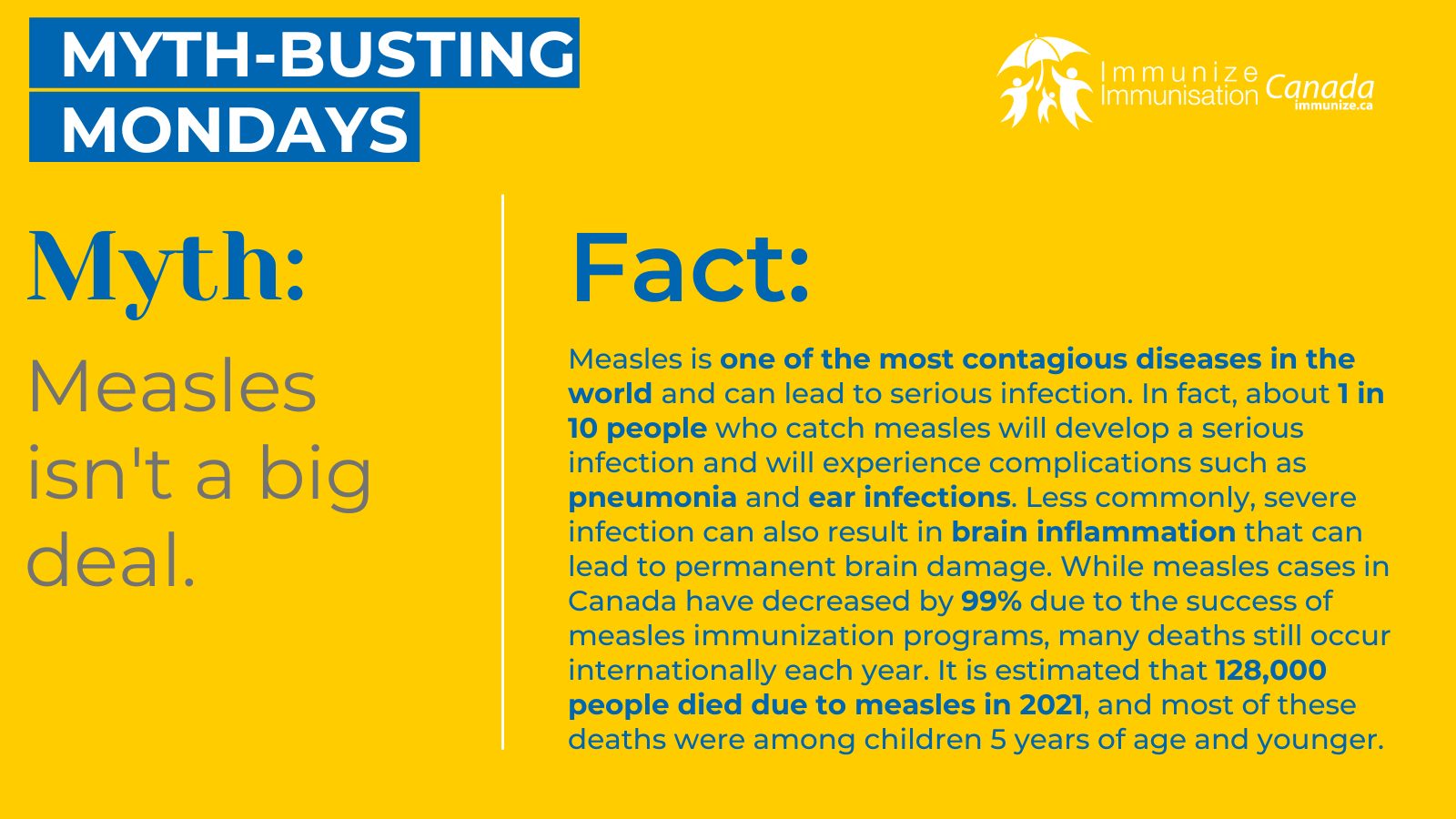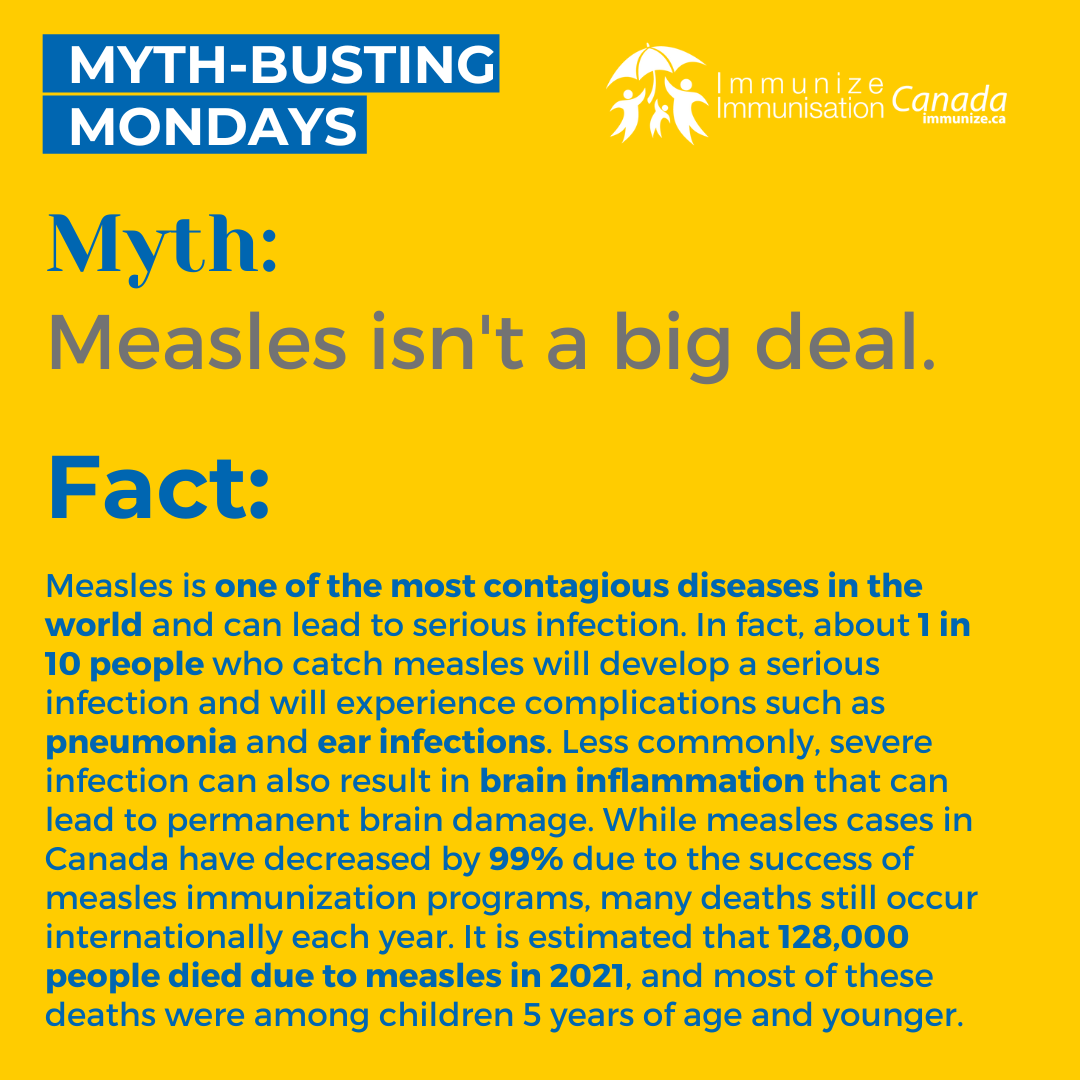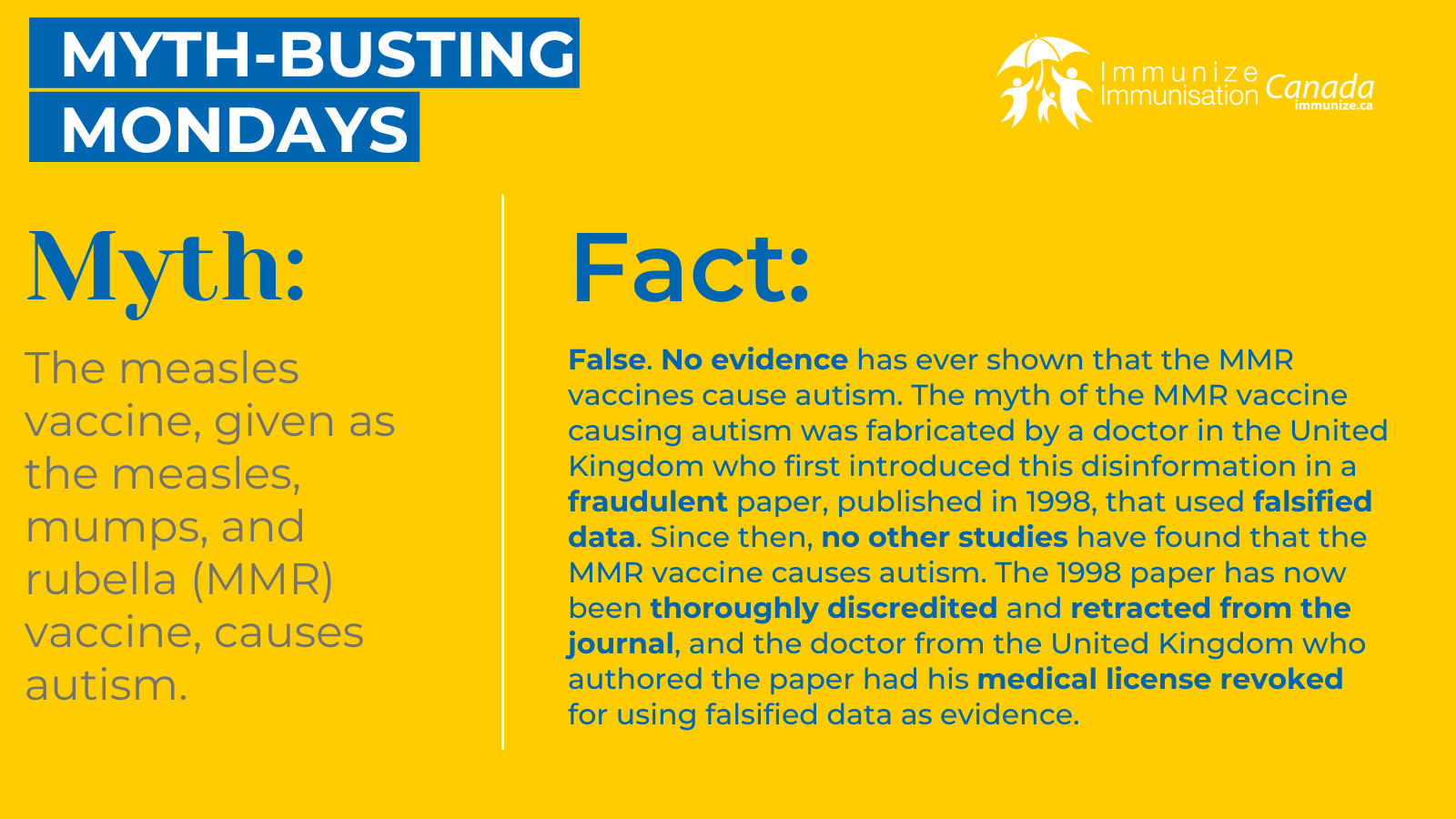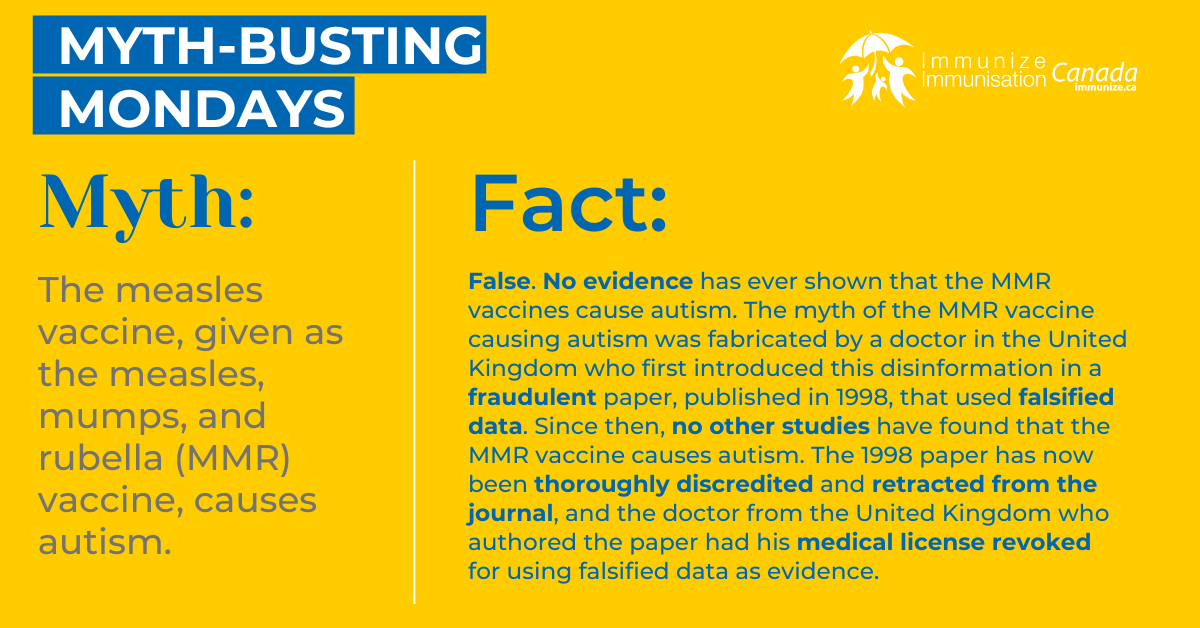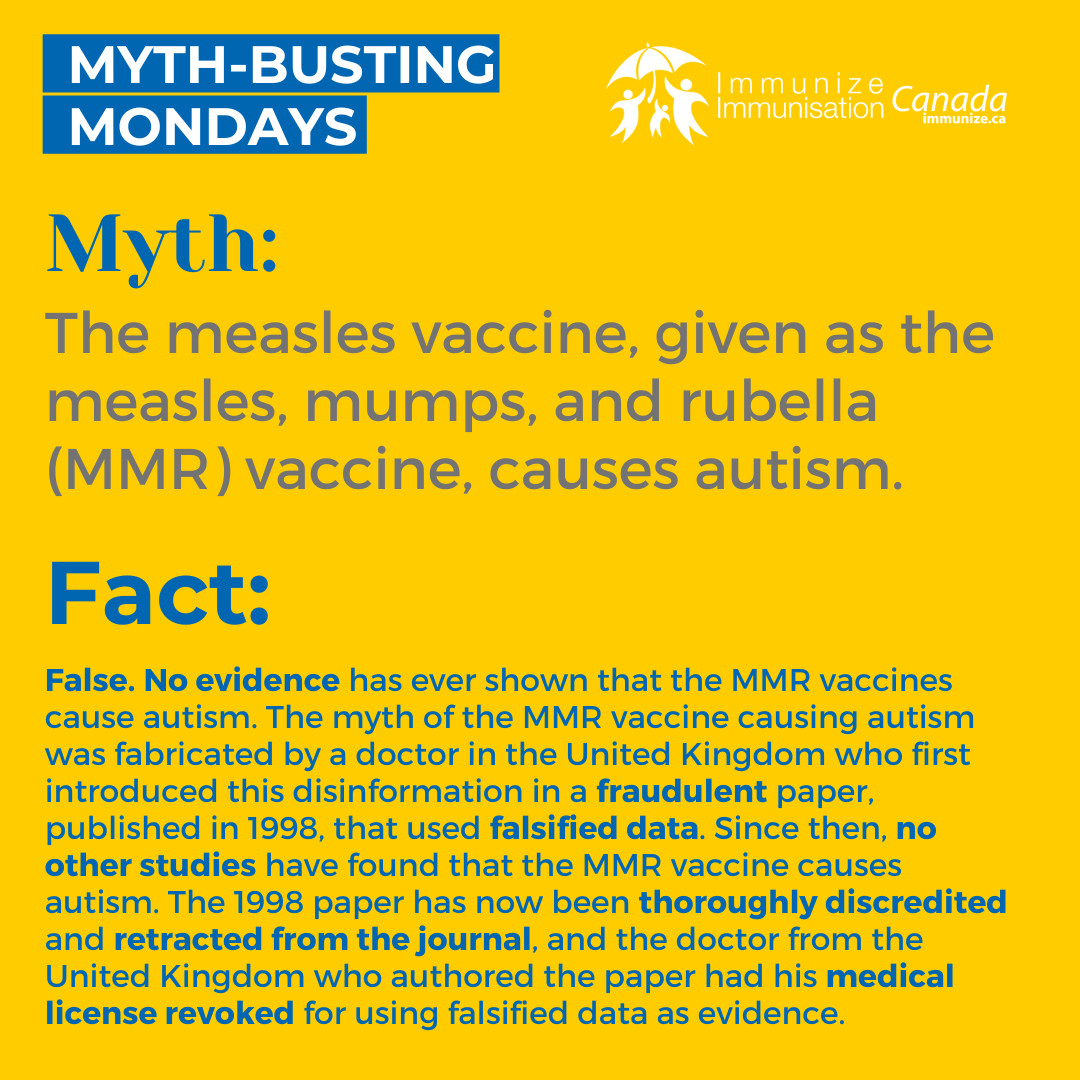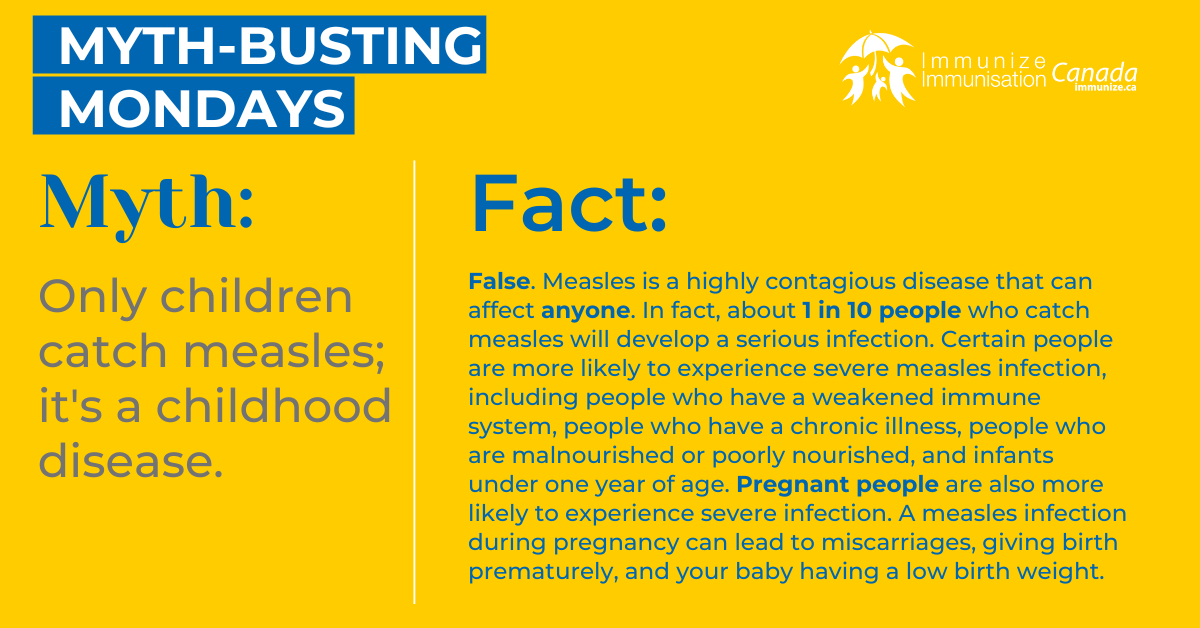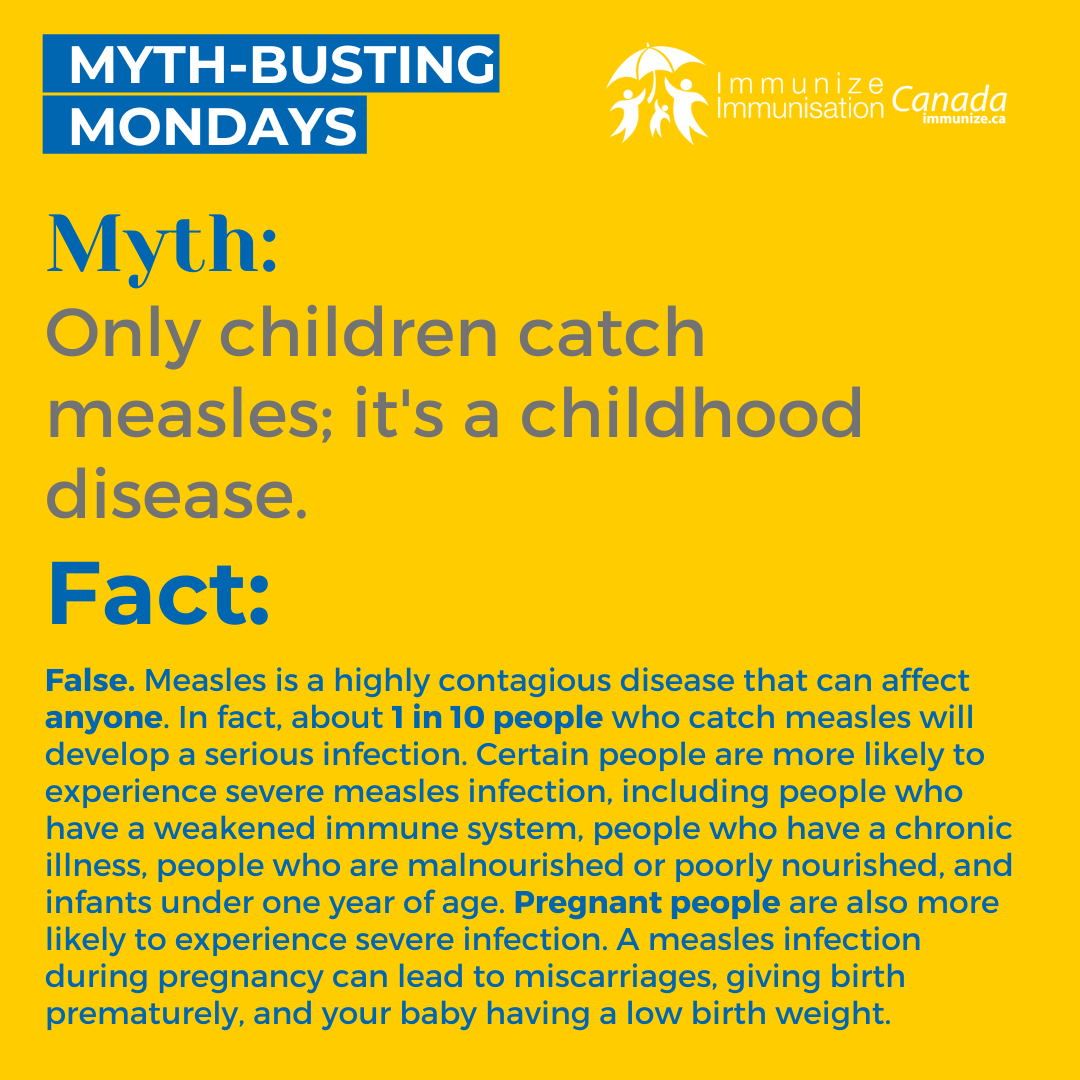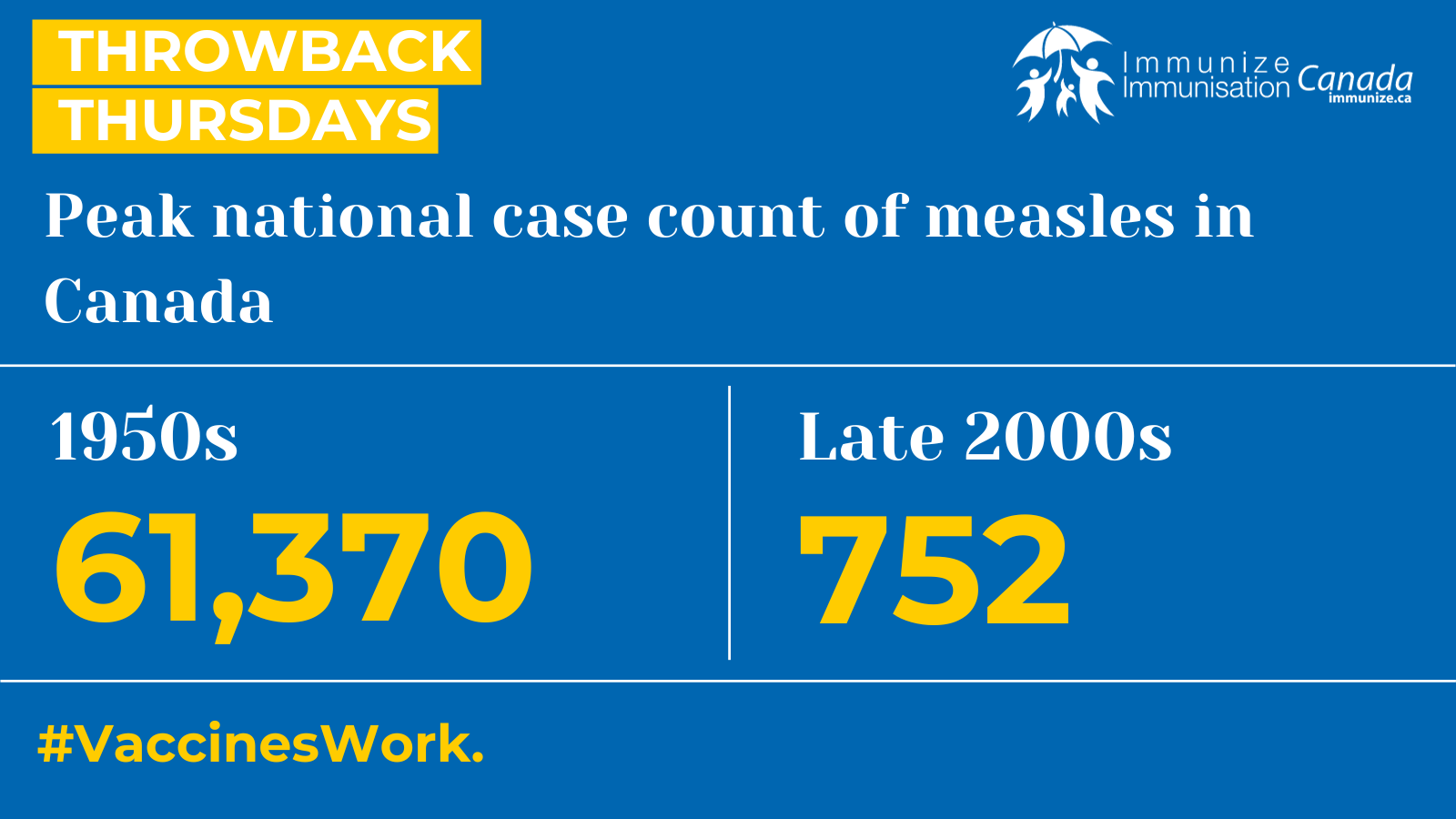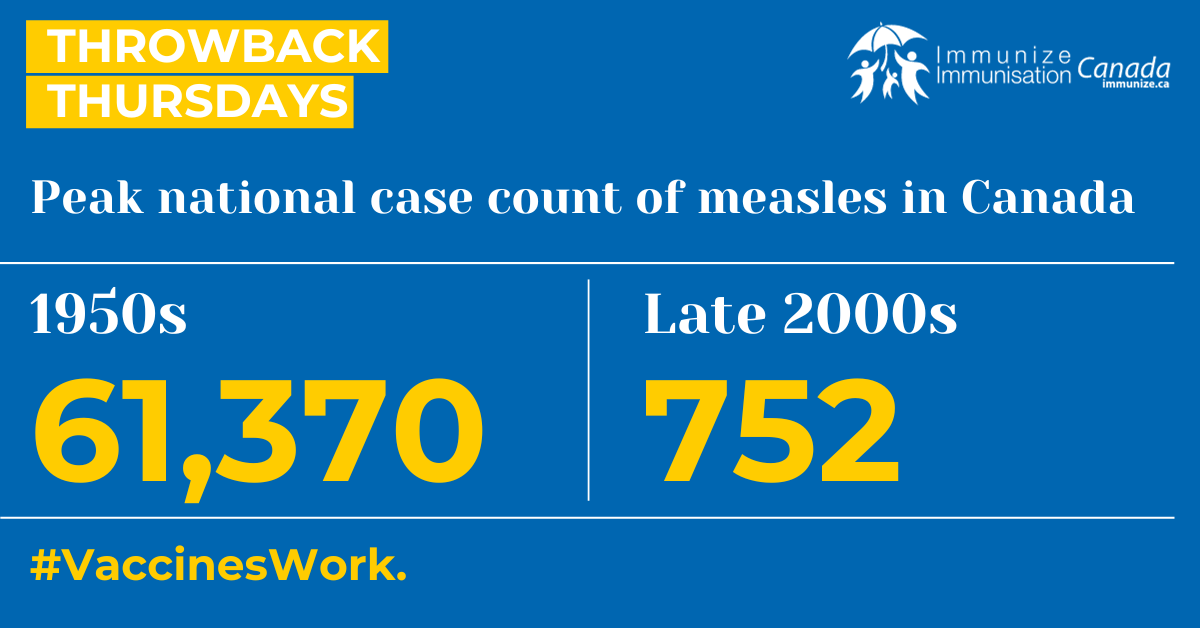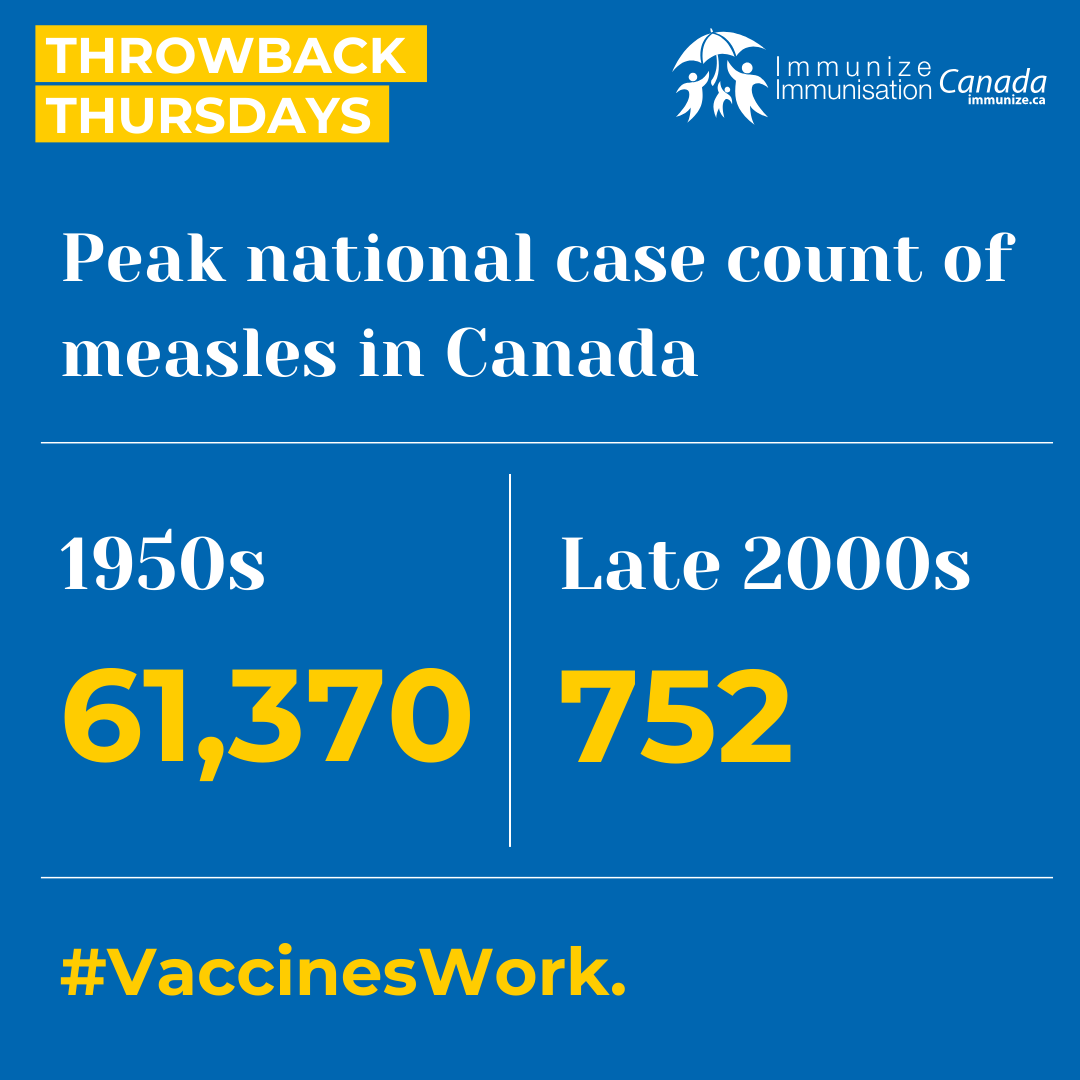Measles
Measles is a highly contagious viral infection caused by the measles virus. In fact, measles is one of the most contagious diseases in the world. Due to the success of measles immunization programs, cases and deaths due to measles have decreased internationally – and, in Canada, by 99%.
Symptoms of measles commonly begin 10 to 14 days after someone has been exposed to the virus. A high fever is commonly the first symptom to appear. The fever is often accompanied by other symptoms, which can include a runny/stuffy nose, inflamed eyes, a cough, and small white bumps that form on the inside of the cheeks. Usually two to three days after these symptoms begin, a rash appears – typically on the face. The rash then spreads to the upper body (chest and stomach area) and then to the arms and legs. The rash is typically accompanied by a high fever. The full body rash often lasts five to six days.
The measles virus enters the body through the mouth or nose. Measles is spread through the air (i.e., when someone who has measles coughs or sneezes in the same room as you and you inhale the infected droplets in the air), through close contact with others (e.g., coughing or sneezing next to someone), or through coming into direct contact with an infected person’s mucus or spit and then getting these fluids in your nose or mouth. It is important to remember that measles is extremely contagious.
Check out our resources on measles immunization and share with your network!
Campaigns and Awareness Materials

While anyone can catch measles, those most at risk for severe infection include people who have a weakened immune system, people who have a chronic illness, people who are malnourished or poorly nourished, and infants under one year of age. Pregnant people are also at higher risk for severe infection. A measles infection during pregnancy can lead to miscarriages, giving birth prematurely, and the baby having a low birth weight.
For the Public
Factsheets
Videos
Vaccine Myths: Children and Measles (video created in collaboration between Science Up First and Immunize Canada)
Canada loses measles elimination status
Measles is no party
Let’s prevent the comeback of measles (video created in collaboration between Science Up First and Immunize Canada)
For Healthcare Professionals
Pocket Guide for Immunizers
The purpose of this pocket guide is to serve as a tool for health care providers to learn more about measles, mumps, and rubella (MMR) vaccines, enabling them to make strong recommendations to their patients.
This pocket guide references recommendations made in the Canadian Immunization Guide Chapter on Measles Vaccine, the Canadian Immunization Guide Chapter on Mumps Vaccine, and the Canadian Immunization Guide Chapter on Rubella Vaccine from the National Advisory Committee on Immunization (NACI).
NACI Statements
Summary of NACI statement of February 13, 2025: Updated recommenadtions on measles post-exposure prophylaxis. 13 February 2025. National Advisory Committee on Immunization (NACI).
Campaigns and Awareness Materials
Poster and social media images
Cod liver oil is great if you need more vitamin D. But it definitely won’t prevent measles. The measles vaccine will.
(social media image – .png: 149 KB)
Vitamin A therapy is great if you have a medical deficiency of vitamin A. But it definitely won’t prevent measles. The measles vaccine will.
(social media image – .png: 160 KB)


